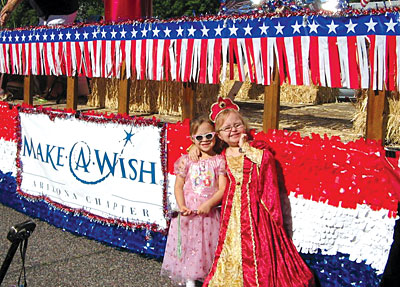 CREATIVE COMMONS |
Last weekend, I joined my mother in the field to plant paddy seedlings in three tiny terraces by the side of a river. It's a task that always seems a little futile as the soil is comprised of pebbles and sand. Any fertile particles once there have been swept up and away by the trucks and tractors driving to the river for a wash, allowing the rocks underneath to enjoy the sunshine.
Like last year, the six-inch canal that leads to the field was delivering only droplets, a disappointment for seedlings that like to swim in water. Yet there was my mother, carrying spades, shovels and buckets, insisting on planting in the hope that using the land and the mulch produced during the harvest will make the soil a little more fertile next year.
Her hard work and the unshakeable belief that it will, one day, lead to success seemed particularly remarkable this year. I returned to Kathmandu with mud under my toenails to find pictures of the Fourth of July celebrations of my friends in America. Among the pictures of Wave Your Flag cakes and "the bunch of slobs trying to eat 78 hot dogs without barfing" were messages of pride in the American dream: the promise of freedom and with it prosperity and success, the idea that with hard work, everyone can achieve prosperity.
Whether it is the families behind Swayambhu breaking rocks day in and day out, or the men who lug around baskets of fruits on their bicycles in the high afternoon heat, the culture of hard work is not alien to Nepal. Yet there are also cases like that of Basudevi Sunar of Rajpur who was forced to flee her village with two young daughters two weeks ago because she was ploughing her land to grow food. She was told that as a woman, she is not allowed to use a plough while her (by her account, useless) husband is still alive. So her neighbours shaved her head, paraded her around the village with a garland of shoes around her neck, then kicked her out.
What kind of people punish a woman trying to make a living? And what does it say about the Nepal we want to live in? What is the Nepal of our dreams? Many countries� have slowly picked themselves up after ravaging wars, aided by a collective vision. A dream. After the Korean War, South Korea rallied its human resources to build a new, prosperous nation. After the Second World War, the Japanese decided to ditch the warrior ethos and adopted a national policy centred on peace. Germany too tempered itself to put an end to its imperial ambitions in Europe.
It holds true that in life, without a vision, it is hard to move forward, hard to bind people together, and hard to lead people. If nations were people, what kind of person would Nepal be? Would it be a man of subsistence stumbling from one day to another? Would it only look out for itself, while making sure nobody is doing better? Never before in our history have we had so much freedom, never before have we had so much control over our destiny. This is the time to set our national vision, a dream that goes beyond the political masquerading that Naya Nepal has become. This is a time for Nepali heroes. Because people are the stuff dreams are made of.
READ ALSO:
10+2 for public health, KUL CHANDRA GAUTAM
Green hunt, PUBLISHER's NOTE
The Gambler, PRASHANT JHA
Conflict of coverage, CK LAL
What's sticky?, ASHUTOSH TIWARI



